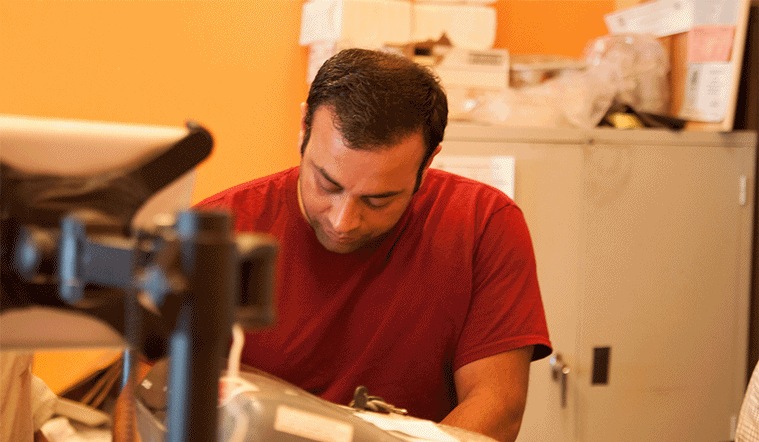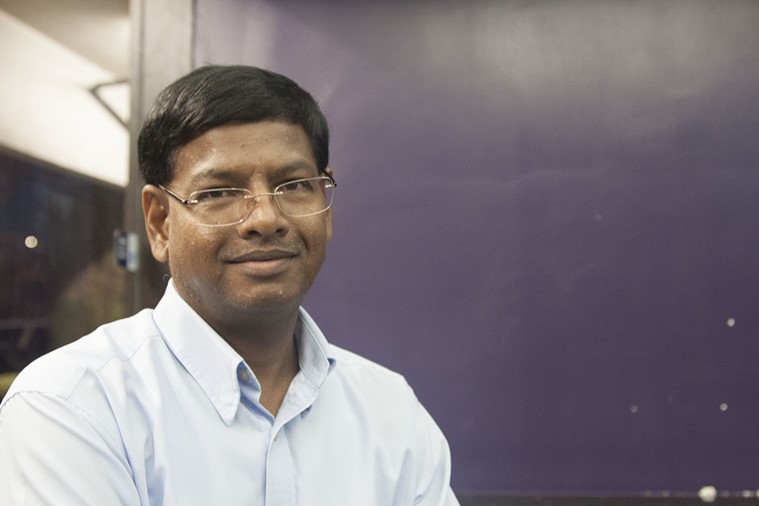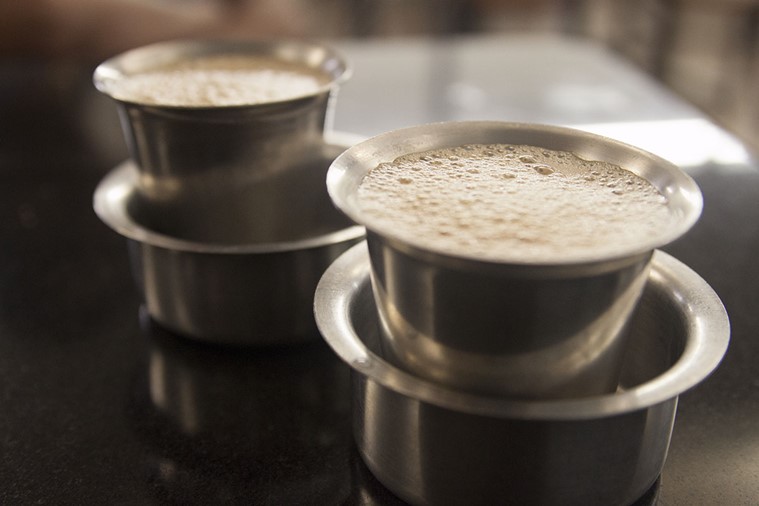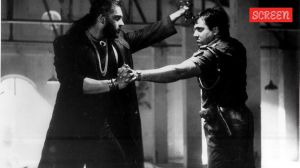Silicon Valley: Where ideas veer off technology to satisfy the Indian palate
With its growing number, the Indian-American community's appetite for authentic Indian restaurants has seen software engineers rise to the occasion and fulfill this need.
 Silicon Valley is becoming a hotbed of Indian restaurants to meet the rising demand from Asian Indian immigrant community in the San Francisco Area.
Silicon Valley is becoming a hotbed of Indian restaurants to meet the rising demand from Asian Indian immigrant community in the San Francisco Area.
After a long day at work, when his colleagues at a high-tech firm in Silicon Valley leave the office to unwind, Rohit Rishi gears up for a second shift.
He heads to “Shah Restaurant,” an Indo-Pakistani food joint that he owns, located in one of the strip malls on El Camino Real in Sunnyvale, Calif. Rishi spends his entire evening taking orders, making naans (Indian flatbread made of wheat) or even running the dishwasher.
“Running the dishwasher is one of the hardest, labor intensive jobs in the restaurant,” said Rishi with the authority of someone who knows the business. “I know it because I’ve done it.”
He heads home at 3 a.m. after closing his restaurant, sleeps for a few hours and gets ready for his day job as a software engineer the next morning.
 Rohit Rishi, the owner of Shah restaurant
Rohit Rishi, the owner of Shah restaurant
Silicon Valley is becoming a hotbed of Indian restaurants like Rishi’s to meet the rising demand from Asian Indian immigrant community in the San Francisco Area.
California has seen a rapid increase in its Asian Indian population in the last decade. According to American Community Survey data released in 2013, California’s Asian Indian population rose by 89 percent from 2000 to 2013, making it by far the largest Asian Indian community in the U.S.
As the community grows, its appetite for authentic Indian restaurants grew and software engineers rose to the occasion to fulfill this need.
“It’s the only thing people discussed at house parties and gatherings for a long time,” said Virender Chibber, the sales and operations manager at the Indian community center, a hub for the immigrant community’s cultural activities located at Milpitas, a city in the Silicon Valley.
Chibber, who closely works with restaurant owners across the Bay Area to organize Indian food services for weddings at the community center, said he has witnessed a rapid growth of Indian restaurants. He’s also seen diversification in the kind of food the restaurants serve and the audiences they cater to.
Even until a decade ago, restaurants mainly served only North Indian food, Chibber said. Now, the Bay Area has restaurants serving from different states like Maharashtra, Gujarat, Tamil Nadu, Goa and Andhra Pradesh.
“People craved for food from their states, their homes,” Chibber said.
Indian immigrants working in the technology companies across the Silicon Valley are powering this phenomenon.
Immigration experts say that it’s not surprising that this new crop of restaurateurs are coming from the high-tech industry because majority of the Indians who immigrate to the U.S. to work in this field.
“There’s a huge demand for workers in the technology and they constitute majority of the Indian immigrants,” said Sheela Murthy, an immigration attorney who works extensively with Indian immigrants.
Ramamoorthy Ramasamy, the owner of Madras Cafe, less than a mile away from Rishi’s restaurant, juggled two jobs for almost six years. He opened Madras Cafe, a South Indian vegetarian restaurant serving “tiffin” or snack items, in 2002 while he was still working at Sun Microsystems as a database administrator. He continued to work as a software engineer for the next six years and quit his job only after he bought an adjacent Indian grocery store in 2008.
“When my friends and I went for lunch at work, we would never find good South Indian vegetarian options,” Ramasamy said. “The Dosas would be expensive and wouldn’t even taste good.”
He added that most Indian restaurants in the Bay Area at that time mainly served North Indian dishes and didn’t do justice to the few South Indian dishes on their menus. Ramasamy craved for food from his home. He realized then that he might not be the only one for yearning for a cup of authentic filter coffee (a South Indian classic, strong coffee served with milk and sugar) or a plate of piping hot steamed idlis (fluffy, round, white savory doughnuts made of rice and lentils.)
With just his savings, in 2001, Ramasamy rented an office and built Madras Cafe from scratch.
The restaurant’s decor is minimal, clean and functional; the chairs don’t have upholstery; the granite tabletops, while sparkling clean, don’t have a tablecloth. And the bare walls, without any paintings or artifacts, make no promises of transporting customers to the exotic land of their food. But it’s this austerity that helps him focus on the clockwork precision with which he maintains the speed, efficiency and consistency of the operation.
 Ramamoorthy Ramasamy, the owner of Madras Cafe
Ramamoorthy Ramasamy, the owner of Madras Cafe
Ramasamy survived two recessions and cutthroat competition by keeping his business small and tightly controlled, he said.
As Ramasamy’s eyes hover across the expanse of the restaurant, his mind calculates how he’ll seat the 25 customers waiting in his cramped lobby. Tall and slender, Ramasamy’s erect posture exudes a briskness that reflects the fast pace of the joint. He takes orders and seats all the customers in 15 minutes. Waiters bring in orders in almost no time (except for the Rava Dosa, a savory crepe made of wheat semolina or Rava, because the wheat semolina takes longer to cook. Ramasamy warns customers about the Rava Dosa while they order).
“Once the customer orders and gets seated, he should not wait for the food,” Ramasamy said. “I want to follow the fast food model of timeliness and consistency.”
Vijay Shankar, 32-year-old software engineer, who is one the many customers waiting in the lobby, vouches for the restaurant.
“I come here because I know how the food is going to turn out when I order it,” said Shankar, who’s been a regular at Madras Cafe for four years now. He’s brought his friend along with him who has come from Sacramento because he trusts the quality of food at the restaurant.
The 250-square foot dining hall that serves around 300 people every weekday and over a 1,000 people on weekends according to Ramasamy, might be outgrowing its space. But Ramasamy hesitates to open another branch or expand on the current menu and start serving full-fledged “meals” along with snacks.
“I often get requests for expanding my menu or start branches in Fremont or San Jose,” he said. “But managing a restaurant is like managing a baby. It needs care and attention. I don’t want to risk the consistency of my quality.”
Ramasamy’s personal nostalgia opened his eyes to the gap in the gastronomical need amongst Indians in the Silicon Valley, but Rishi opened Shah’s as step to chase his dream to be an entrepreneur.
Rishi, 35, in-sync with the Silicon Valley startup culture, had tried his hand at starting multiple online ventures before, but nothing gained significant traction.
“I wasn’t too keen on just working as an engineer. I wanted to be independent,” he said
When Rishi approached 30, his close friend Syed Rashid Hasan called him out of the blue one day and said he was buying a restaurant.
The restaurant Rishi and Hasan bought was one of the branches of Indo-Pakistani restaurant named “Shan,”popular in the San Francisco Bay Area. The chain itself was popular but this offshoot was a sinking ship. Hasan knew the chief chefs – Afsal Khan and Abu Bhakar – well and had enjoyed their dishes when he was their customer. Banking on their culinary skills and with no experience or knowledge of the restaurant business, the duo embarked on an adventure.
Transforming a non-performing restaurant into one of the hotspots in the neighborhood was challenging. Rishi knew that his recipes were solid. But he struggled to build awareness in a hyper-competitive market.
Then, after three years, following a friend’s suggestion, he decided to keep the restaurant open until 3 a.m. And then his business started picking up. His was the first Indian restaurant to extend hours in the Bay Area. Even now, there are only a handful of restaurants that stay open after 10 p.m and even fewer stay open after midnight.
“First people went ‘good food, good food, good food!’ and then they were like this Indian restaurant is open till 3 in the morning,” said Rishi, tapping his hands excitedly on the table.
Keeping the restaurant open brought in a surge in the business and increased the popularity of the restaurant but it took a toll on his personal life. Rishi’s days seemed never ending. He would work his day-job as a software engineer and then work in the restaurants till 3 a.m. and then drive to his home in Berkeley, around 50 miles away from the restaurant. It took him a few years to stabilize the restaurant and learn to balance his family life, job and business.
“My family really got tired of me not being around,” said Rishi. “But they eventually understood that this was a new business and my presence was needed here.”
It’s 11 p.m. on a Saturday night and Shah is bustling with energy; the queue for placing orders spans the length of the restaurant and spills outside. Most of the other Indian restaurants sprawling across the strip malls of El Camino Real have shut down by now.
Like Ramasamy’s Madras Cafe, Shah’s restaurant sports a spartan decor. A customer standing in the queue tells another, “Don’t come here for ambience. Come here for the quality of the food.”
It’s been five years since Rishi bought “Shah” and even though the restaurant is teeming with customers on any given night and garners raving Yelp reviews, Rishi says he still has some way to go before he leaves his day job as a software engineer.
It’s because profit margins are low in the Indian restaurant business (an entree at “Shah” costs $7 -$9) and his dishes involve complex preparation techniques, which take time, he said.
He’s working on his next move to expand his culinary business and inching toward his dream of becoming an entrepreneur, full-time. Donning a white apron and a chef’s hat, he comes out of the kitchen flashing a mischievous smile.
“I am just tasting new recipes for my taco food truck,” he explains why he’s wearing this outfit when normally he lounges around the restaurant in a t-shirt and a pair of loose fitting jeans.
His eyes gleam as he discusses his new menu – burgers, wraps and tacos with Indian gravies and fillings – and plans his next grand gastronomic adventure.




- 01
- 02
- 03
- 04
- 05




























